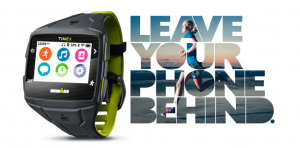Running

Cold Weather Safety Tips for Running
As a Minnesotan, running in cold weather presents some unique safety concerns. Extreme temperatures can even pose life-threatening risks if you don’t take some basic precautions.
Layer up. It’s always better to increase the number of layers when running in the cold. As your body temperature increases, just alter the number of layers during your run.
Always tell someone where you’re going and when you expect to arrive home. Make sure that at least one person is aware of your plans. If you don’t arrive as expected, they’ll recognize that you’re missing and know where to look for you.
Always wear reflective gear when running after dark. Due to the decrease in daylight hours, it’s more likely that you’ll be running in the dark during the winter. Make sure you wear light-colored, reflective clothing so that you can easily be seen by oncoming vehicles.
Run short loops. When it’s cold outside, consider running multiple laps of a short course, rather than one longer loop. This ensures that you’ll never be far from home in the event of an emergency. Running a short course also ensures that you won’t be heading into bad weather for an extended period of time, which, aside from being extremely unpleasant, can significantly lower your body temperature.
Carry your cell phone, identification and some cash with you for an emergency. If you run into a major problem, make sure you have your cell phone handy and enough cash to get you home if necessary. This is good advice for any run, at any time of year. Sometimes unavoidable circumstances can leave you stranded and you definitely do not want to find yourself out in the cold, unable to run, and several miles from home without help.

New TIMEX Ironman GPS ONE
This is my watch. It enables me to listen to music through bluetooth. Up to 1,000 songs. Receive and send texts. 1 year fee services with ATT. Water-resistant up to 50 meters. Tracks all my activities including heart rate and foot pod. It is also Fitness App compatible.
Something to consider… Being a Clydesdale, the watch fits me great. For someone with small wrists…not so much.

Running – Damn, It Hurts
0
Yes, running hurts. Do you know why? It’s because you’re a Clydesdale, Hello!!
I had just read an article about the 5% rule. Jordan D. Metzl M.D. – The 5 percent rule is a simple way to minimize your risk of getting a running injury. He says, keep your mileage low if your current body weight is more then 5 percent over your ideal weight.
Well, that would be us Clydesdales. Just think, with each extra pound of body weight, you are loading 5 to 8 pounds of force across your back, hips, knees and ankles. Now its time for a little math – whatever your “extra” weight is, multiply them by 6 pounds and that would be the extra force that has been added to your body when you run. So, a Clydesdale that is 40 pounds over weight, multiplied by 6 = 240 pounds of additional weight load above your current weight. Ouch!!
What to do? Log many more swimming and biking miles over running. Also, strengthen your core!! Pick 3-5 core exercises and modify them to work for you. The key is to do them everyday. As your body gets “in shape” at least internally, you can start adding more running miles.

